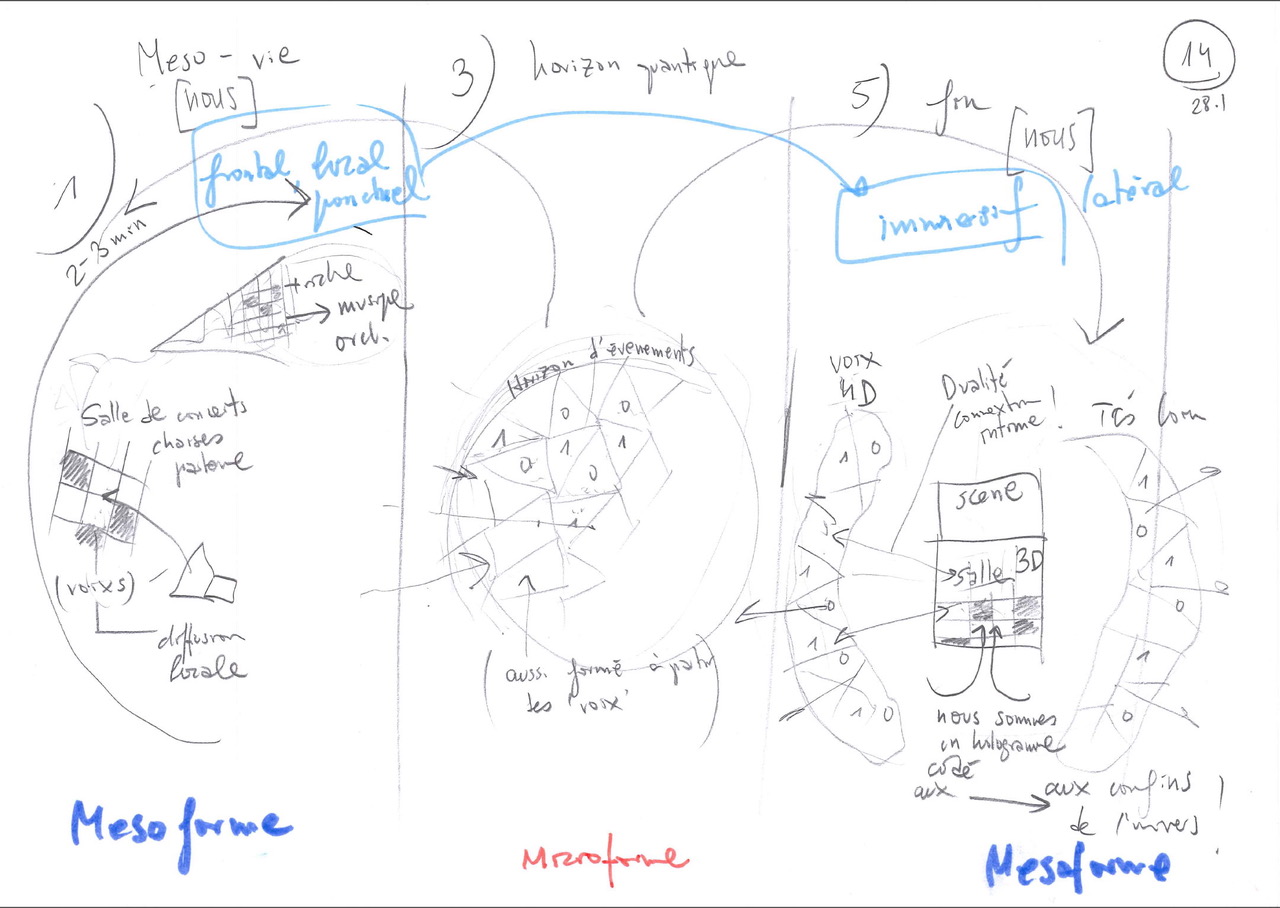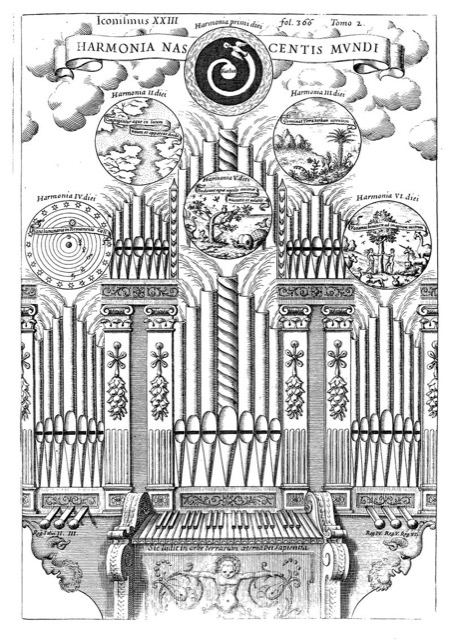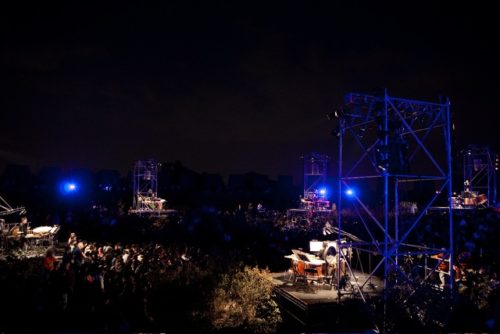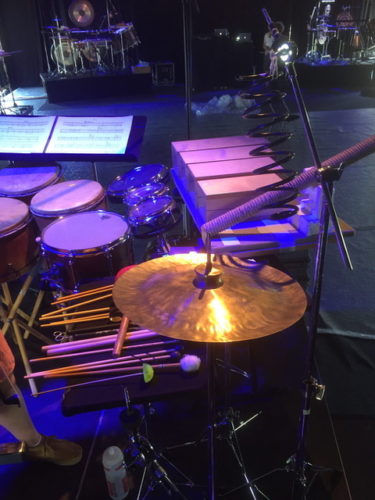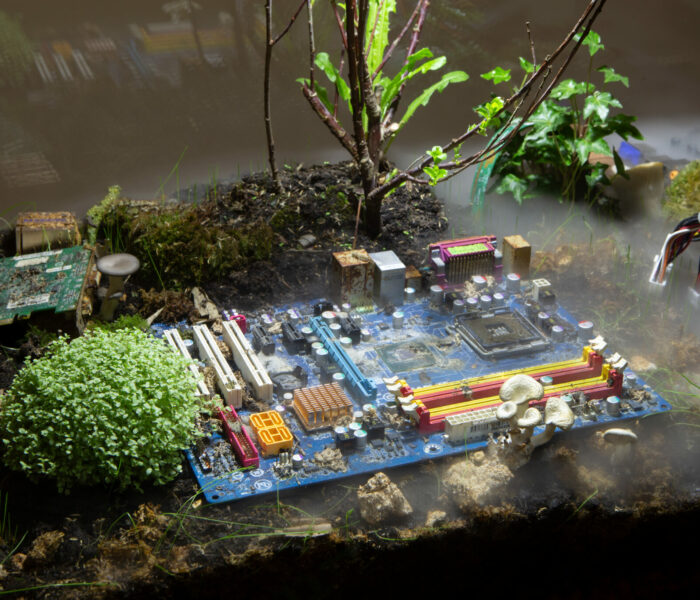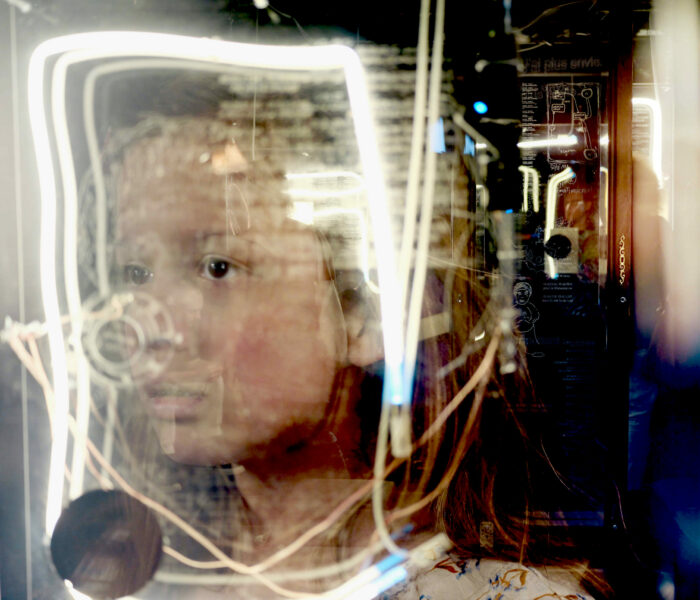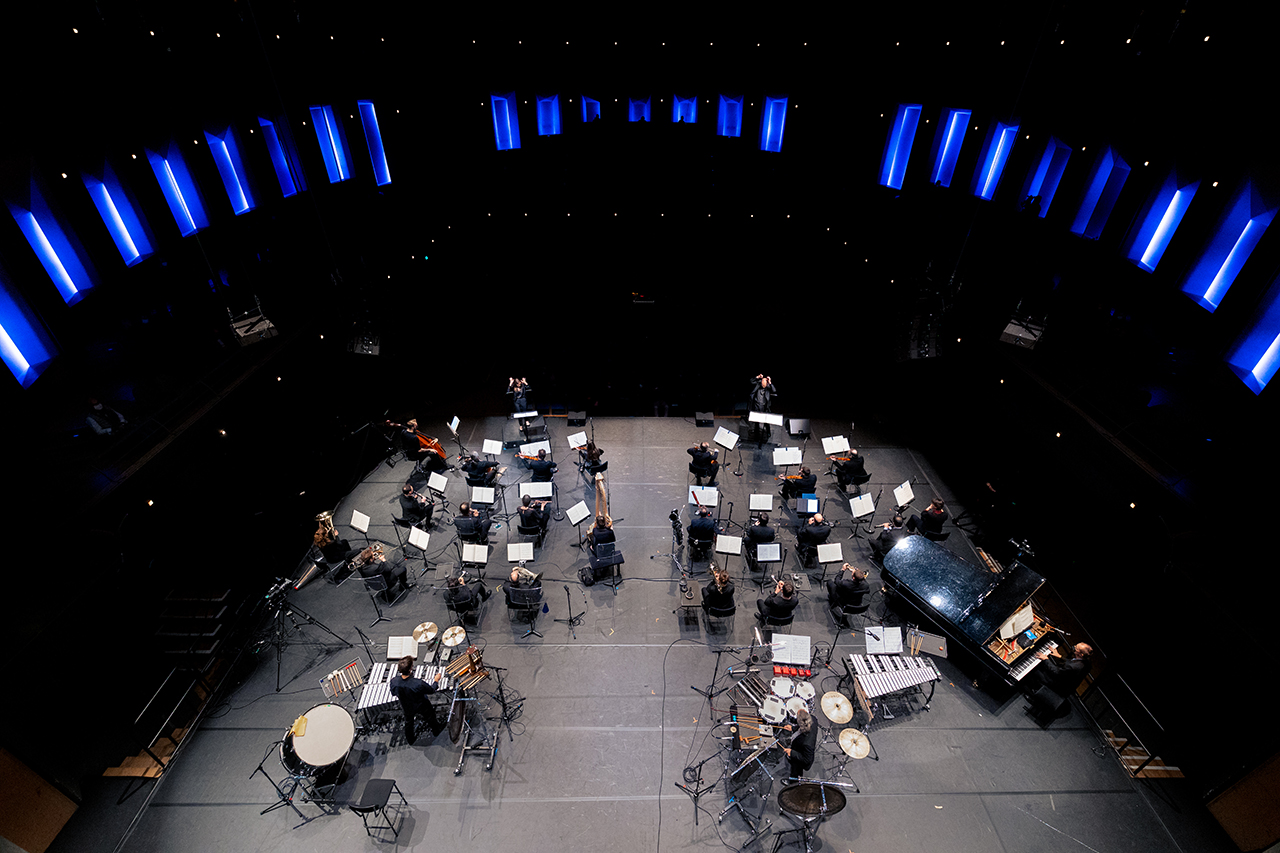Tourné vers les sciences et vers les arts, observateur et expérimentateur, Jean-Pierre Luminet semble s’inscrire dans la lignée des grands humanistes de la Renaissance. Spécialiste de réputation mondiale des trous noirs et de la cosmologie, il est directeur de recherche au CNRS et membre du Laboratoire d’astrophysique de Marseille après avoir été membre du Laboratoire Univers et Théories (LUTH) de l’observatoire de Paris-Meudon.
Nous l’avons rencontré à l’occasion de la sortie du nouvel ouvrage qu’il consacre à sa relation à la musique et dont il nous dévoile en avant-première le contenu.
Jean-Pierre Luminet, vous êtes astrophysicien, écrivain, poète et musicien (vous lisez la musique dites-vous) : comment toutes ces disciplines se combinent-elles, s’unissent-elles dans votre existence ?
Cela tient à une forme d’esprit particulière qui remonte à mon enfance ; très tôt je me suis passionné pour un grand nombre de disciplines différentes et pas qu’artistiques d’ailleurs ; petit, je vivais à la campagne et j’étais déjà un grand observateur de la nature : attentif à la vie des animaux, je regardais le ciel et m’intéressais à l’astronomie, sans penser que je deviendrais un jour astronome ! J’aimais, et j’aime toujours, la littérature, la poésie, la peinture ; la musique est venue un peu plus tard, vers douze ou treize ans. Ce qui m’a toujours attiré, ce sont les diverses formes de la pensée créatrice ; et, parallèlement à ma carrière d’astrophysicien au CNRS, j’ai poursuivi ces autres activités avec le même élan ; astrophysique, musique, littérature, peinture forment un tout qui me permet d’essayer de penser le monde dans des registres différents, puisqu’on ne le décrit pas de la même manière lorsqu’on élabore des équations mathématiques ou lorsqu’on est dans un processus artistique. Mais dans les deux cas, il y a démarche et imagination créatrices, et c’est cela qui m’intéresse. Il faut de l’imagination à un chercheur en physique théorique autant qu’à un musicien, un écrivain ou un poète ; c’est pour cette raison que je pratique toutes ces disciplines, persuadé que ces différentes manières d’appréhender le monde s’enrichissent mutuellement et se fertilisent de manière souterraine. Je consacre un chapitre de mon dernier livre à ce phénomène d’interaction entre toutes ces disciplines de l’esprit.
S’ajoute à cela la connotation esthétique à laquelle je tiens beaucoup ; je rappelle que le terme « esthétique » a son origine dans le mot grec de cosmos qui, avant de désigner l’univers, nommait le beau, l’ordre, le sens. On a d’ailleurs gardé le terme de cosmétologie ! Depuis Pythagore, on essaie de trouver des rapports entre l’organisation du cosmos en termes de justes proportions, de beauté et d’élégance ; l’expérience des cordes vibrantes de Pythagore a fait comprendre que les intervalles de l’harmonie musicale étaient aussi un rapport de justes proportions entre nombres entiers. Les Anciens ont établi des liens subtils et profonds entre mathématique, géométrie et musique – même si la littérature et la poésie tiennent également une grande place dans l’inspiration musicale. Tous ces domaines enrichissent l’esprit quand on pratique, comme moi, la physique fondamentale, et l’esthétique participe de la recherche pour tâcher d’exprimer les lois du cosmos.
Vous dites « placer la musique au-dessus des autres formes d’expression artistique ». Pouvez-vous préciser votre pensée ?
C’est un avis strictement personnel, en lien avec ce que l’on vient de dire précédemment ; comparée aux autres formes d’expression artistique (que j’ai pratiquées), la musique est peut-être le langage le plus abstrait, passant le plus souvent par une partition dont il faut connaître les codes pour pouvoir la lire. En ce sens, la musique se rapproche des mathématiques, s’exprimant par des équations qu’il faut déchiffrer pour en pénétrer le sens. C’est pourtant de cette forme très abstraite que surgit l’émotion où tout est contenu : jaillissement extraordinaire qui contraste avec l’abstraction et la formalisation de la pensée musicale. Je suis particulièrement ému par la musique, même si je le suis également par les textes littéraires et par la peinture. On dit des compositeurs qu’ils entendent leur musique avant de l’écrire ; je ne pense pas que cela se passe ainsi dans d’autres domaines artistiques. Et pour filer la comparaison avec les mathématiques, je trouve que la partition est une forme d’écriture relativement concise, un condensé d’émotions sous forme abstraite, comme les équations d’Einstein qui permettent de décoder les mystères de l’espace-temps et des trous noirs…
Vous avez travaillé avec de nombreux compositeurs et compositrices dont Gérard Grisey pour Le noir de l’étoile. Était-ce votre première collaboration avec un musicien ? Pouvez-vous revenir sur la réalisation d’un tel projet ?
Je raconte tout cela dans un des plus gros chapitres de mon livre qui doit paraître à l’automne prochain. Disons qu’il y a trois niveaux d’interaction avec les compositeurs : un véritable travail en commun avec certains, non pas sur le plan de l’écriture musicale mais dans le fait d’intégrer l’astrophysique en tant que support à l’élaboration de l’œuvre ; ce fut le cas avec Gérard Grisey et Hèctor Parra. Un autre genre de collaboration s’est instauré autour de mes textes, poèmes et ouvrages scientifiques qui ont inspiré certains compositeurs qui les ont mis en musique. Il y a enfin les rencontres que j’ai faites avec des personnalités comme Henri Dutilleux ou André Boucourechliev, avec qui j’ai pu échanger et créer des liens d’amitié. J’ai dû, au total, côtoyer une quinzaine de compositeurs.
Gérard Grisey a bien été le premier. Il venait de rentrer de Berkeley où il avait enseigné durant un certain nombre d’années ; c’était en 1988 ; un de mes collègues californiens lui avait fait écouter des enregistrements sur cassette que s’amusaient à faire les radioastronomes avec les rythmes cosmiques qui se propagent dans l’espace. Les plus intéressants sont ceux des pulsars, qui ressemblent à des percussions africaines quand on les transpose acoustiquement. Gérard avait envie de faire quelque chose avec ces sons ; il ne me connaissait pas mais avait lu mon article de vulgarisation sur les pulsars dans l’Encyclopédia Universalis ; il m’a donc écrit une lettre sans savoir que j’aimais beaucoup la musique d’aujourd’hui et que je le connaissais, ayant dans ma discothèque un vinyl de musique spectrale ; je lui ai répondu tout de suite ; nous sommes devenus très vite amis et avons commencé sans plus tarder notre collaboration ; il est venu plusieurs fois à l’observatoire de Meudon pour choisir le type d’objets célestes qui l’intéressait ; il y avait d’autres phénomènes astronomiques que les pulsars qui pouvaient être utilisés de façon acoustique, mais la nature de ces rythmes implacables pouvant interagir avec des rythmes humains l’ont particulièrement motivé ; je l’ai présenté à mes collègues spécialisés dans la radioastronomie (qui n’est pas ma partie) et ça c’est merveilleusement passé. Je suis moi-même parti à Berkeley en 89, au moment où il a commencé la partition ; il me mettait au courant de ses avancées et il m’a demandé d’écrire un texte d’introduction, qui fait partie intégrante de l’œuvre et qui est enregistré, même s’il m’est arrivé de le dire de vive voix au début de certains concerts ; il peut être aussi lu par des comédiens. Gérard était très curieux de la recherche scientifique de pointe. Je lui avais parlé d’idées très théoriques que l’on commençait à évoquer à l’époque, que j’ai appelées « l’écume de l’espace-temps », un terme qui, trente ans plus tard, est devenu le titre d’un de mes derniers livres ; ce concept l’avait frappé, qui lui semblait rejoindre les dimensions de la musique spectrale : faire entendre le grain du son, l’écume du son ; il se trouve qu’il avait en cours d’écriture une grande pièce pour orchestre qu’il a appelée Le temps et l’écume. Est venu ensuite Le Noir de l’étoile et j’ai, depuis, suivi toute sa production.
La création à Bruxelles du Noir de l’étoile en 1991 revêt une dimension quasi historique !
Elle a en effet été programmée en fonction du passage des pulsars que le public a pu entendre « en direct », si l’on peut s’exprimer ainsi au sujet de sons si éloignés de nous. Nous sommes allés plusieurs fois au grand radiotélescope français de Nançay, en Sologne, avec les techniciens pour vérifier que les captations pouvaient se faire et que les pulsars allaient être au rendez-vous ; ils ne passent qu’à certaines époques de l’année ; il faut pour cela consulter les éphémérides. C’était donc le passage du pulsar qui allait dicter l’heure du concert. A un moment donné de la partition, les interprètes – Les Percussions de Strasbourg qui ont créé l’œuvre – s’arrêtent de jouer pour laisser entendre le pulsar ; parmi les douze ou quinze représentations auxquelles j’ai assisté, toutes n’ont pas tenté le « direct » ; c’est tout de même très compliqué et cela réclame une extrême précision. On a fini par renoncer au concept et le son du pulsar a été fixé sur support.
“Les pulsars vont guider notre navigation musicale, écoutons ces horloges cosmiques égrener leur secondes. Nous avons rendez-vous avec les gardiennes du temps, c’est un rendez-vous amoureux. Ouvrons la fenêtre et attendons l’heure juste”. Poème de J.P. Luminet
Les musiciens sont-ils nombreux à s’intéresser à l’astrophysique ? Hormis Gérard Grisey et Hèctor Parra sur lequel nous allons revenir, comment s’est faite la rencontre avec vos autres collaborateurs (ou collaboratrices) musiciens ?
Il y a une liste assez importante de compositeurs passionnés par l’astrophysique, surtout des compositeurs d’aujourd’hui. Il n’y en a pas eu énormément avant la deuxième moitié du XXᵉ siècle ; l’avènement de la musique électroacoustique et, avec elle, une génération de compositeurs ayant parfois des formations d’ingénieurs, ont favorisé cet engouement ; on note une véritable floraison d’œuvres inspirées par l’astrophysique, dans la musique électroacoustique comme dans la musique instrumentale d’ailleurs : elles constituent un catalogue d’œuvres assez important que je dresse à la fin de mon chapitre intitulé La musique des sphères où j’appréhende toute l’histoire de la musique, de l’antiquité à nos jours.
Je réalise que l’année 1988 a été une année charnière dans mon parcours musical, correspondant à la parution de mon premier livre de vulgarisation sur les trous noirs, qui a eu un certain retentissement car c’était le premier du genre. Le livre a suscité beaucoup d’articles dans la presse, et c’est à ce moment là que j’ai commencé à être contacté par plusieurs compositeurs, Gérard Grisey mais aussi Thérèse Brenet, professeur au CNSM, fascinée par le ciel et l’harmonie céleste qu’elle aime perturber par des tempêtes. Elle a utilisé un de mes poèmes et écrit pour orchestre d’harmonie une pièce intitulée 5523 Luminet car l’astéroïde 5523 porte mon nom ! Je citerai également Karol Beffa avec son œuvre pour chœur et orgue sur un de mes poèmes.
Et Regis Campo, passionné d’astrophysique, qui a écrit en 2017 une pièce sur mon poème Soleil pivotal de la Galaxie extrait du recueil Itinéraire céleste.
Votre prochain livre sur l’astrophysique et la musique contemporaine est une réflexion de plusieurs années je suppose ? Pouvez-vous nous le présenter ?
Je l’ai intitulé Du piano aux étoiles et sous-titré « autobiographie musicale » car je parle de mon parcours musical. Je raconte ma vie en rapport avec la musique dans un grand chapitre d’ouverture qui lance les thèmes qui seront développés dans le livre : celui de mes collaborations avec les musiciens, en réservant des chapitres entiers à Gérard Grisey et Hèctor Parra ; un très gros chapitre est consacré aux autres rencontres musicales. Je reviens également sur les disques qui ont marqué mon parcours musical et ma pratique pianistique ; les souvenirs de concerts mémorables, en région parisienne surtout. C’est un ouvrage de trois cents pages… et je n’ai pas pu tout dire ! Étant de plus en plus invité dans des colloques musicaux, j’espère avoir le livre en main pour le présenter prochainement aux Lisztomanias de Châteauroux.
Inscape d’Hèctor Parra pour ensemble de seize solistes, grand orchestre et électronique est le fruit d’une riche collaboration, je vous cite, « aux fins de concevoir un voyage psychoacoustique à travers l’espace-temps courbé par la gravité d’un trou noir et distordu par le passage dans un « trou de ver ». Considérez-vous dès lors le compositeur comme un partenaire de recherche ? Autrement dit, la musique vous fait-elle avancer dans vos intuitions et découvertes, à travers notamment les livrets que vous écrivez pour les compositeurs ?
Ce sont des collaborations extraordinairement riches avec des êtres remarquables, aussi bien Gérard Grisey qu’Hèctor Parra avec qui j’ai tissé des liens d’amitié très forts. Plus polyvalent encore que Grisey, Parra s’intéresse à l’astrophysique mais aussi à la biologie ; il a une culture à la fois scientifique et littéraire exceptionnelle. Au-delà de cela, je ne pourrais pas dire que ces œuvres me font avancer dans mes recherches ; c’est plutôt le contraire qui se passe ; je fertilise l’esprit des compositeurs avec mes textes qui ont, certes, une teneur scientifique mais restent, au niveau des connaissances, de la très grande vulgarisation. Par contre, cette activité continue de nourrir cette vision esthétique que je peux avoir. J’ai assisté aux quatre représentations d’Inscape d’où je suis sorti chaque fois bouleversé. Hèctor m’a même révélé des choses inscrites à la fin de sa partition que je n’aurais jamais soupçonnées : une sorte de métaphore musicale d’un modèle cosmologique un peu complexe, l’univers dodécaédrique révélé au sortir du « trou de ver », qu’il a parfaitement assimilé.
D’autres rencontres de ce type ont-elles marqué votre parcours ?
Je voudrais également évoquer ma collaboration avec Gérard Pape qui a débuté avant celle d’Hèctor et qui se prolonge encore aujourd’hui. C’est un compositeur américain qui s’est installé en France. Il a dirigé les Ateliers de l’UPIC (devenus CCMIX ) à la suite de Xenakis et a fondé en 2008 l’ensemble de musique électronique CLSI (Cercle de la Libération du Son et de L’Image) avec Paul Méfano dont je parle également dans mon livre. Pape m’a contacté en 2012 et m’a demandé de lui écrire un livret où je combine science et poésie ; nous avons commencé à élaborer un projet intitulé Atome d’espace et de temps, reprenant cette idée abordée avec Grisey de la granularité possible, de l’atomisation de l’espace et du temps. Le projet était tellement ambitieux qu’il n’a pas pu aboutir à temps mais je crois que le travail est en cours de finalisation et l’œuvre devrait être prête en 2022 en vue d’une création en Italie. L’effectif s’est un peu transformé. Il y aura un récitant, des voix solistes, quelques instruments et le support électroacoustique.
Vous avez été contacté pour faire partie du comité scientifique du Centre Européen de la Musique sur lequel j’aimerais que l’on referme cet entretien…
Il s’agit d’un projet d’ampleur internationale qui consiste à réhabiliter ce lieu historique de Bougival où ont vécu Pauline Viardot et Ivan Tourgueniev, où Georges Bizet a achevé Carmen… Depuis vingt ans, Jorge Chaminé travaille à ce projet qui est devenu aujourd’hui le Centre Européen de Musique (CEM ) dont il est le directeur. Est prévue la construction d’un auditorium avec ateliers d’écriture, master-classes et résidences d’étudiants. En acceptant l’invitation, j’ai bien insisté sur le fait que j’étais là pour défendre la musique de notre temps et la création.
Propos recueillis par Michèle Tosi



)

